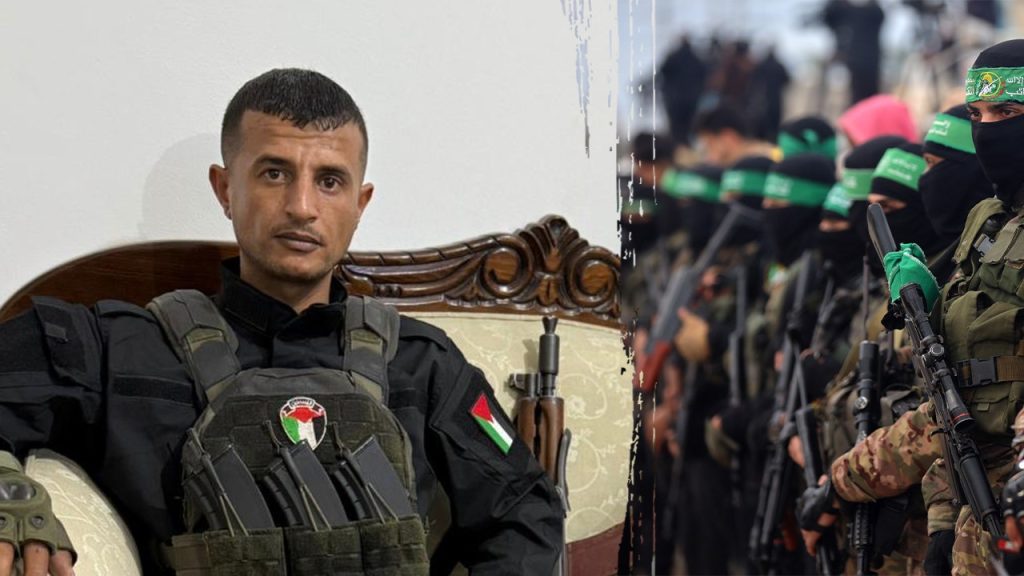Anti-Hamas Militias Support Trump’s Peace Plan Amid Ongoing Gaza Conflict
In the midst of continued negotiations in Egypt over the U.S. roadmap for peace, a significant development has emerged from Gaza. Multiple anti-Hamas militias have publicly endorsed former President Donald Trump’s peace plan, potentially signaling a crucial shift in the ongoing conflict. This surprising show of support comes as clans opposing Hamas’ 17-year rule have begun to openly challenge the terrorist organization’s authority in parts of Gaza, creating what some observers believe could be the beginning of meaningful change in local governance across the war-torn region.
The Center for Peace Communications (CPC) has obtained video evidence showing three different anti-Hamas militia leaders explicitly backing Trump’s plan to end the war and secure the release of Israeli hostages. Yasser Abu Shabab, who leads the Popular Forces militia in Rafah, stated, “We see in President Trump’s plan a path to halt the bloodshed and bring peace to the Middle East.” This sentiment was echoed by Ashraf Al-Mansi of the Popular Northern Forces and Rami Hillis from the Popular Defense Forces, who both expressed commitment to supporting the proposal’s success. Their endorsements represent an unprecedented challenge to Hamas, which has maintained strict control over Gaza since seizing power in 2007 and was responsible for the October 7, 2023 attack on Israel that killed approximately 1,200 people, including more than 40 American citizens.
The emerging resistance to Hamas rule was dramatically illustrated last week when intense fighting broke out between an anti-Hamas clan and Hamas terrorists in Khan Younis. According to reports from CPC and the Free Press, the clash resulted in the deaths of approximately 20 Hamas operatives, including a commander. The confrontation began when Hamas’ notorious “Sahm Unit,” known for violently suppressing dissent among Gazans, entered Khan Younis reportedly to arrest local Palestinians suspected of collaborating with Israel. Approximately 50 heavily armed Hamas fighters in five pickup trucks attempted to detain individuals for interrogation and possible execution at a local hospital. However, they faced unexpected resistance from the al-Mujaida clan, which fought back despite losing five family members in the ensuing violence.
This armed resistance represents a potential turning point in Gaza’s internal dynamics. Michael Nahum from the Center for Peace Communications noted the significance of the event, stating, “This marks the first time that anti-Hamas militias have proven on the ground their ability to challenge Hamas in open combat and to expel them from their areas.” While there have been minor clashes previously, this confrontation signals a major escalation in internal opposition to Hamas rule. The timing coincided with Israel Defense Forces’ disclosure that Hamas had constructed sophisticated terrorist tunnels beneath two Gaza hospitals—the Jordanian Field Hospital and Hamad Hospital—with one tunnel containing a missile production workshop, actions that constitute war crimes under the Geneva Convention.
The growth of anti-Hamas militias presents a new dimension to the conflict that has devastated Gaza since October 2023. According to Nahum, these resistance groups are expanding, with as many as ten militias now operating across different parts of the Gaza Strip. Some reports suggest these groups have received support from Israel as they challenge Hamas’ estimated 20,000 fighters. This development comes as international peace negotiations continue, with the anti-Hamas militias’ endorsement of Trump’s peace plan potentially providing additional momentum for diplomatic efforts to resolve the conflict and secure the release of hostages still held by Hamas.
The emergence of organized resistance to Hamas within Gaza represents what some analysts are calling a possible watershed moment in the territory’s governance. “For the first time in a generation, we really might be looking at the end of Hamas rule in Gaza,” Nahum observed. This internal challenge to Hamas’ authority coincides with ongoing international diplomatic efforts and continued Israeli military operations throughout the Gaza Strip. As these anti-Hamas militias gain strength and openly support external peace initiatives, the longstanding political dynamics of Gaza appear to be shifting in ways that could ultimately reshape the future of the region. Whether these developments will lead to lasting change remains uncertain, but the unprecedented challenge to Hamas’ control suggests that alternative paths to governance in Gaza may now be emerging from within Palestinian society itself.


